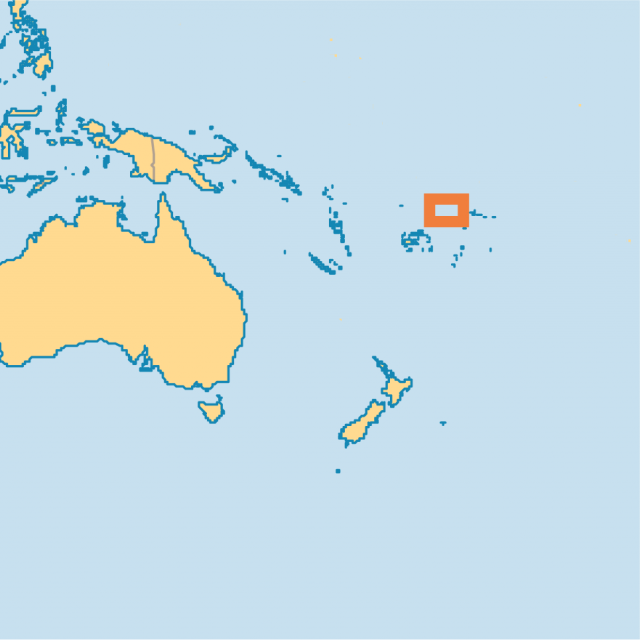Wallis and Futuna Islands
THE WALLIS AND FUTUNA ISLANDS (overseas territory of FRANCE) are a collection of tiny islands in the South PACIFIC OCEAN. Consisting of three hereditary kingdoms, its government is an anomaly as an integral part of the French Republic, but there is little impetus for change, in either traditional government or its affiliations with France.
Part of an arc of islands stretching from the MARSHALL ISLANDS in the north across the island chains of KIRIBATI and TUVALU, all the way to the Samoan islands, Wallis and Futuna fit snugly within the wider sphere of Polynesian language and culture. FIJI and TONGA lie close as well, to the west and south. The islands are volcanic in origin, with fringing reefs. They are heavily deforested. Uvea (Wallis) is the largest of the group (40 square mi or 102 square km), with the capital, Mata-Utu, and about two-thirds of the population.

A shallow caldera of an extinct volcano is filled by a lake whose water levels rise and fall with oceanic tides, indicating subterranean links with the sea. Roughly 125 mi (200 km) to the southwest, the Iles de Horne include Futuna, divided between two kingdoms, Alo and Sigave, and Alofi, which is uninhabited because of a lack of fresh water. Futuna has a much higher peak than any of the other islands: Mount Singavi, which rises to 2,525 ft (765 m). It is newer than the other islands, and more geologically active—it frequently feels earthquakes, and has no fringing reef.
The natives of Uvea (Wallis) and Futuna were probably settled from different directions: Uvea from Tonga and Futuna from Samoa, and the two groups remain divided along these linguistic lines. Spotted by Dutch and British explorers in the 17th and 18th centuries, the islands were given their European names: Hoorn for the Dutch town, and Wallis for the British captain Samuel Wallis (who also discovered Tahiti). The islands were mainly left to themselves until the arrival of French missionaries in 1837. A de facto protectorate was established in 1842 and formalized in 1887, but in reality authority was held by a Catholic bishop.
In 1913, it was declared a colony, but after World War II all of the French colonies were given the opportunity to revise their status, and Wallis and Futuna voted to become an overseas territory in 1959, giving the populace full citizenship, health care, education and retirement pensions. The government is a mixture of traditional and modern, with a governing council of the three kings and three French-appointed delegates, and an elected territorial assembly. The islands send a member to the French Senate and the National Assembly.
These ties are important to ensure heavy subsidies from the French government and continued access to the nickel mines and plantations on NEW CALEDONIA, where many Wallisians have sought work—about 8 percent of the population (17,000 people) of New Caledonia are Wallisians. Remittances from such emigre labor provides a good deal of the islands' revenue. Local industries are very small, including coconut farms, handicrafts, and fishing.